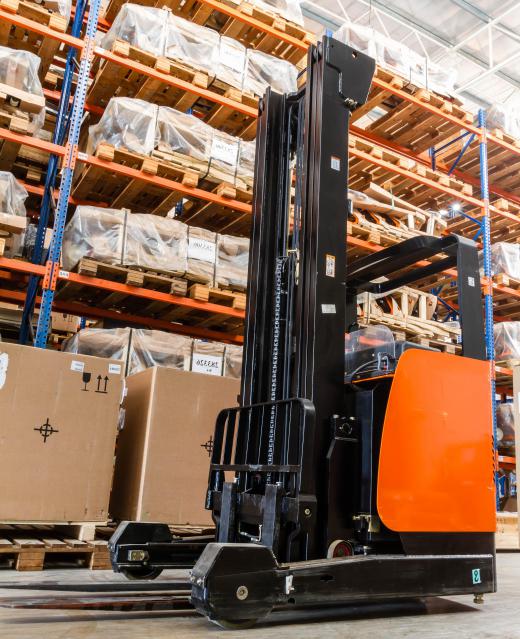A forklift scale is an accessory or piece of equipment that may come standard on some lifts, and be an option on others; it allows objects being lifted by the forklift to be weighed. Scales typically have a digital readout, and could even have an on-board printer so that weights can be properly documented. Scales may be able to process weights in kilograms or pounds, and the scale can be calibrated to take into account any attachments on the forklift.
Generally, a forklift scale works by utilizing sensors found in the forks themselves or the in hydraulic system of the lift. It works by measuring the resistance of the object it is lifting, thus determining and displaying an accurate weight. The key for the scale is to correctly translate the resistance detected into an accurate weight. While there are alternate ways of weighing, a forklift scale offers a certain level of convenience, especially at busy shipping facilities, by eliminating the necessity of a separate procedure.

The system typically runs on electricity that is already available on board the forklift. In some cases, the electrical requirements for the scale may exceed the amount of available electricity and another battery supply of some type could become necessary. Generally, the installer should be able to determine if the available electrical supply is sufficient.
The user interface on a forklift scale is housed in either a heavy plastic or metal container and usually mounted with bolts directly to the forklift. Generally, control buttons will at least include an on/off switch, a way to zero out the scale and possibly a print button. The display may include a back light so that the operator can read the weight even in darker conditions, which are common when loading freight trucks any time of the day, but especially at night.
Transportation and manufacturing companies are the primary consumers for forklift scales, where weight measurements may be essential to operations. For example, if a forklift operator can weigh the freight while loading a truck, he or she will know whether the truck is a legal weight when it goes onto the road. Further, for shipping companies, it may be a way to increase revenue when shippers accidentally or deliberately declare a lower weight. It could also act as a safeguard to help prevent lifting items that are heavier than the forklift is rated for.
A forklift scale may only be rated to weigh accurately up to a certain weight. It is up to the user to understand the limits of the system being used, and to use it correctly. Incorrect readings could potentially cost a company a great deal of money in fines and damaged equipment, and could also be a very serious safety issue.
